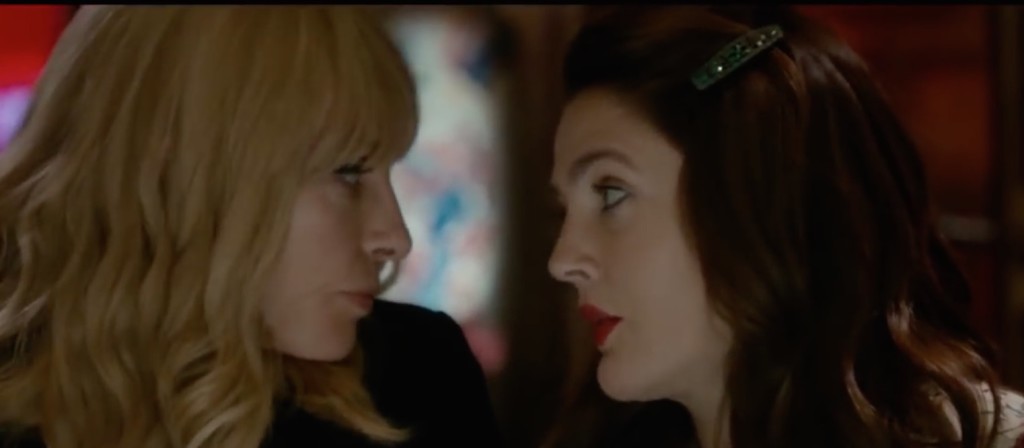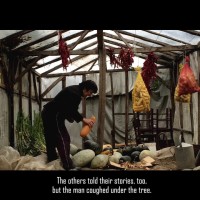It’s a good guess that when Jacqueline Passos made BALLOON, her goal was to tell a story. She certainly succeeded, using an iPhone 6 to create a visually arresting and emotionally satisfying short. But a well-made movie can do more than entertain us. A second view of BALLOON reveals simple techniques available to novices as well as professionals.
Borrowing these tricks isn’t cheating. As T.S. Eliot famously said, “Amateur poets borrow, mature poets steal!” What will make your work original is the material you discover and work with. The proven techniques are there simply to help you end up with well-made–watchable–movies.
The simple techniques we discovered in BALLON are listed below the thumbnail. But before you scroll down, you might first study the video on your own. Ask yourself, “What is the filmmaker doing at each moment when the story comes alive for you.” The lessons you learn may be different from ours. In that case, we hope you’ll share your observations in the comments area.
THE TECHNIQUES
Start with a real beginning. (00:01) The tilt up into the clouds previews the story’s main action: flying. With a little imagination, you can come up with a similarly engaging opening visual for just about any topic. For example, if you’re documenting a child’s first successful bicycle ride, you might start out with a spinning wheel or with feet turning the pedals. If you’re teaching how to make an omelet, butter melting in the pan might work. Adding the movie’s title–as done here–creates what filmmakers call a “title sequence.”
Dissolve from one shot to the next. (00:10) Fading out one image while fading in the next is one of cinema’s oldest visual tricks. The first movie dissolve was in Georges Miles CINDERELLA (1899). Apps like iMovie make dissolves easy to create–a matter of dragging the dissolve icon in between two shots. While some movies get away with lots of dissolves, less is usually more: think of the dissolve as a spice to be used judiciously.
Come in close. 00:11 The close-up distinguishes movies from theater works. Bring the camera near a person or object not only lets us see details, but also draws us into the action.
Move the camera. 00:11. Moving the camera—especially with a static subject such as the box of crayons or a landscape—adds energy to a shot. Two tips: 1) To avoid bumpy camerawork, use a tripod or a stabilization device such as the iKan Fly; 2) To avoid giving the audience the impression you don’t know what you’re recording, generally move in one direction only, instead of panning back and forth.
Cut on action. 00:12 For a smooth transition from one shot to the next, try cutting on action. In this example, the first shot shows a close-up of a hand moving upward; the second shot shows the same movement but from further back.
Focus on faces. 00:17 This technique is a subset of “Come in close.” Facial expressions capture a wide range of emotions–from joy to fear, from love to hate. If you want your audience to respond emotionally, fill the frame with faces.
Try narration. 00:18 Amateur actors often have a hard time making dialogue seem natural. Even well-trained actors can find dialogue challenging. An alternative is to have a narrator–often one of the characters in the movie–speak words needed to help tell the story. While some critics dislike “voice over,” narration has been used successful in many hit movies including JULES AND JIM, SUNSET BOULEVARD, BLADE RUNNER, and–more recently–BEASTS OF THE SOUTHERN WILD. Narration works especially well with travelogues, instructional videos, and documentaries.
Look for two-shots. 00:23 Many actions involve pairs: people arguing, physically fighting, chasing, and expressing affection. Framing two people together–or two animals or a person and an animal–can bring drama to your video.
Show, don’t tell. 00:50 While words are important, often gesture is the more powerful way for characters to express desires and feelings. Note here how the girl doesn’t need words to convey that she wants the balloon. Later (01:38) her posture communicates sadness.
Add music. Silent movies were never really silent. From the earliest days, theaters provided live music to help tell the stories. To experience the significance of music, view BALLOON–or other movies–with the sound turned off.
* * *
For more insights into Jacqueline Passos’s creative moviemaking, see her “Making Of” video:



 Previous post
Previous post
 Next post
Next post






Hi there!
Thank you so much for writing this awesome article on our short film Balloon! It’s so exciting for me to see that a lot of the techniques we tried to pull off in Balloon seem to have worked out pretty well. So reading your article really felt rewarding, thank you.
Balloon was the first short film I directed, but of course, it was a team effort. My friends here at Rise and Shine Films have more experience than me and helped me a lot.
I’m happy to answer any questions you guys might have! Either comment on Vimeo or YouTube, or find us on twitter @riseandshiner
Thanks again!
Jackie